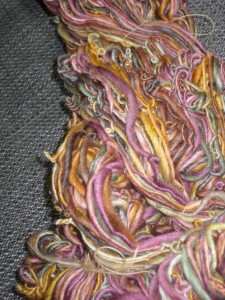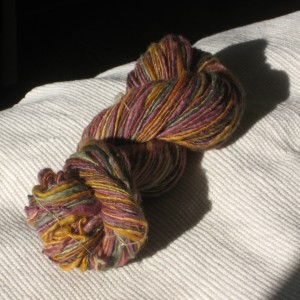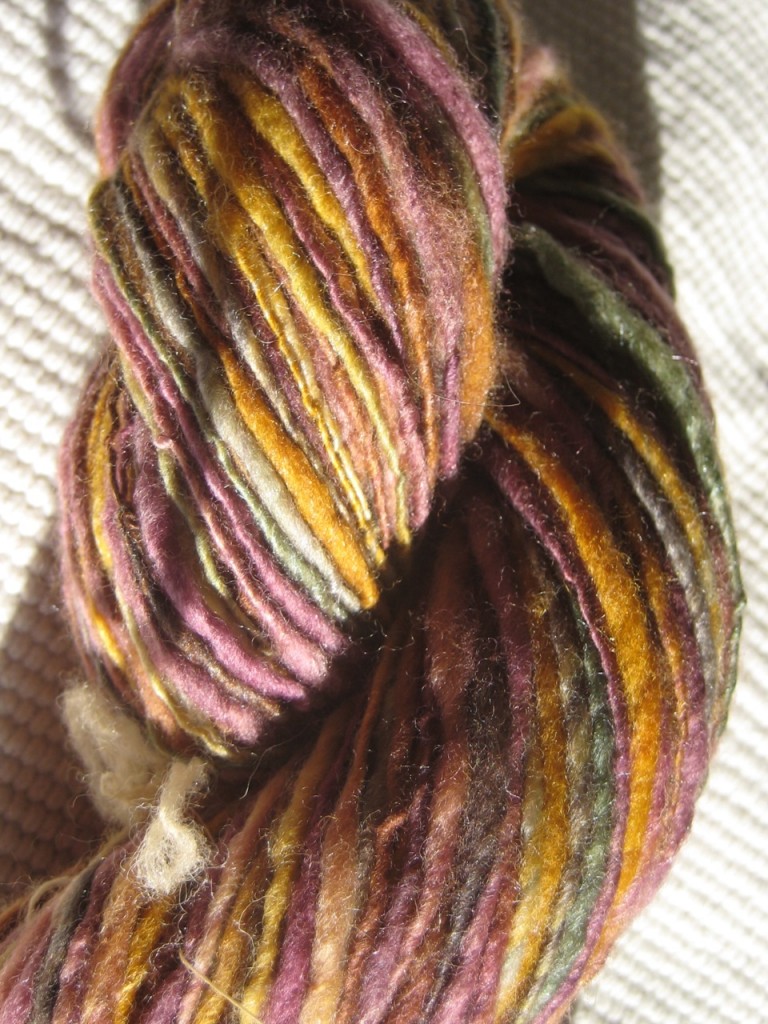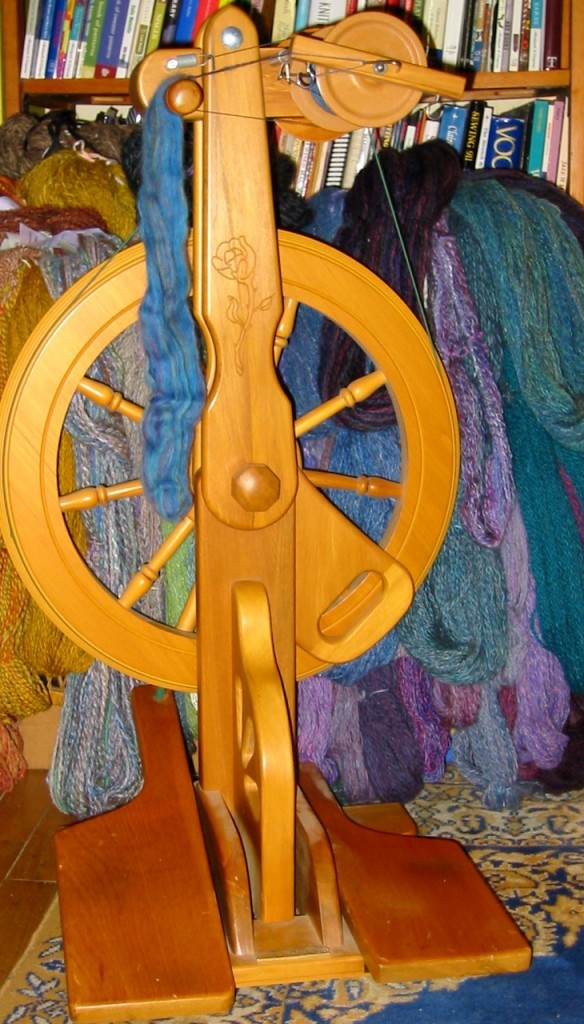After reading Judith MacKenzie’s article on spinning plump, silky singles in the Spring 2010 issue of SpinOff, I wanted to try it. The article recommends a 50/50 blend of silk and merino, so I searched for a space dyed roving with those proportions at the Fiber Event in Greencastle Indiana last April. After visiting all of my favorite booths, I finally tracked down what I needed at the River’s Edge Fiber Arts booth.

I’m used to spinning thin and plying, so it was a challenge to keep the yarn plump and avoid overtwisting.I did a practice run with a less expensive 30% tencel/70% merino blend, and now have finally gotten together the courage to work with the wool and silk.
The unwashed skein looked pretty kinky and messy, uneven in both grist and twist.

After washing in hot water with an icy rinse, and hanging with a plastic hanger as a weight to keep it straighter, the yarn is ready to behave. I think the result is pleasing enough that I will look for more silk/merino blend roving and use this technique again, perhaps dying my own next time.


